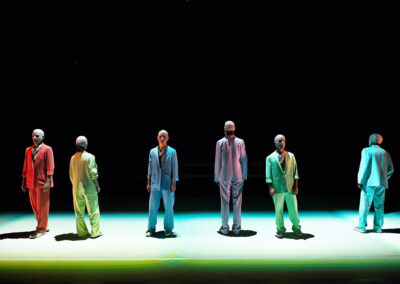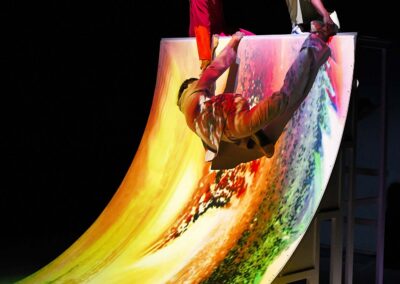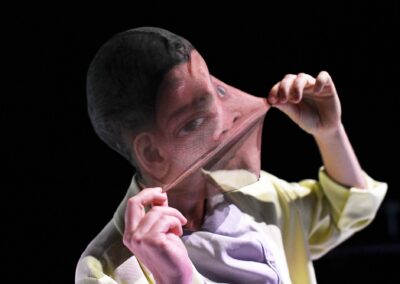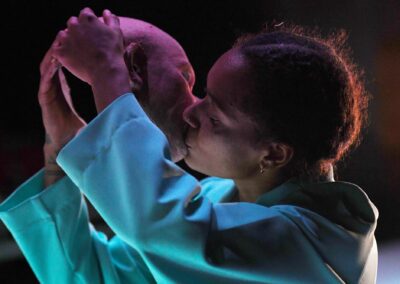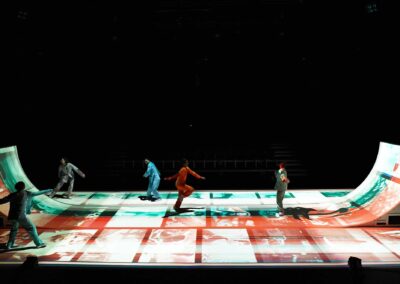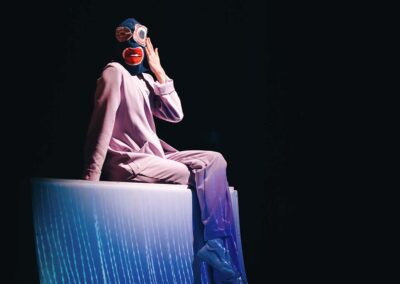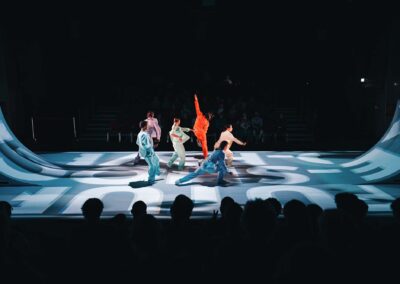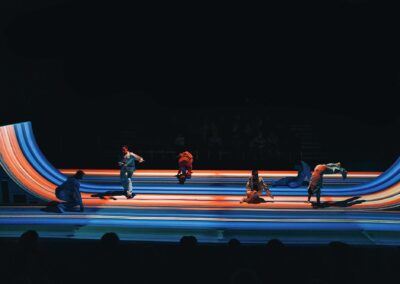Anna Konjetzky arbeitet seit fast zehn Jahren kontinuierlich als freie Choreographin in München. Dabei sucht sie die Begegnung mit Künstlern anderer Kulturen und Lebensräume. Ihre Arbeiten, die sich an der Schnittstelle von Tanz, Installation und Performance bewegen, sind extrem physisch und sehr oft durch eine ausgeklügelte Licht- und Raumregie strukturiert. Anna Konjetzky arbeitet interdisziplinär und transkulturell. Jedes ihrer Stücke ist ein thematisch angemessenes Formexperiment. Ihre Arbeiten beeindrucken durch die starke Körperlichkeit ihrer Darsteller/innen – ob solistisch auf der Bühne oder als amöbenhafte Ansammlungen ohne eigene Identität, stets suchen sie die Auseinandersetzung mit dem Material des Raumes und seinen Begrenzungen, mit Boden, Decke, Wänden. Anna Konjetzky setzt ihre Darsteller der Welt aus, die sich darin zu behaupten suchen. Ihr Motto lautet: „Den Blick durch den Körper auf die Welt richten. Möglichkeiten denken. Risiken nehmen. Zerbrechlichkeit suchen.“ Danach verarbeitet sie Erfahrungen in fremden Kulturen, Begegnungen, Erlebnisse, Fremdheit, Angst und findet dafür den adäquaten körperlichen Ausdruck in zum Teil ungewöhnlichen Bewegungen: Zucken, Zittern, Um-sich-Schlagen, Flattern… Dergestalt komplexe Produktionen erarbeitet sie zusammen mit ihren Tänzern, aber auch mit Musikern, bildenden Künstlern, Filmemachern, und häufig in internationalen Kooperationen. Ihre Choreographien wurden u.a. beim Festival Spielart, DANCE 2010, unidram Potsdam, Tanztage Regensburg, beim Festival Danse Balsa Marni Bruxelles sowie in Kampala, Nairobi, Hanoi, Istanbul, Gent und Salzburg gezeigt. Anna Konjetzky erhielt 2006 das Tanzstipendium der Senatsverwaltung Berlin für Germaine Acogny/Senegal. 2009 gewann sie den Wettbewerb operare der zeitgenössischen Oper Berlin. Im gleichen Jahr erhielt die Tänzerin Sara Huby für Anna Konjetzkys Choreografie „Elephantengedächtnis“ im Rahmen des Festivals euro-scene Leipzig den 1. Preis „Das beste deutsche Tanzsolo“. 2013 war Anna Konjetzky für den Georg Tabori Preis nominiert. Aktuell arbeitet die Choreografin an ihrer zweiten Produktion für ein junges Publikum: das Tanztheaterstück „Ein Bein hier und ein Bein dort“, das bei THINK BIG! Festival #3 im Oktober 2014 uraufgeführt wird. Anna Konjetzky ist eine Künstlerin, die ihren Weg konsequent und beharrlich verfolgt.
Der Jury unter dem Vorsitz von Kulturreferent Dr. Hans-Georg Küppers gehörten in diesem Jahr an: Thomas Betz (Journalist, Kurator), Sabine Glenz (Preisträgerin 2012), Anke Hellmann (Tanzwissenschaftlerin), Simone Schulte (Kuratorin von Tanz und Schule), Tobias Staab (Dramaturg Münchner Kammerspiele) und Bettina Wagner-Bergelt (stellvertretende Direktorin Bayerisches Staatsballett) sowie aus dem ehrenamtlichen Stadtrat der vorhergehenden Stadtratsperiode Dr. Ingrid Anker, Monika Renner (SPD), Thomas Niederbühl (Die Grünen /Rosa Liste), Dr. Reinhold Babor und Walter Zöller (CSU)
Die Preisverleihung findet für geladene Gäste im Herbst im Rahmen des Festivals “Rodeo”, dem Münchner Tanz- und Theaterfestival, statt.
